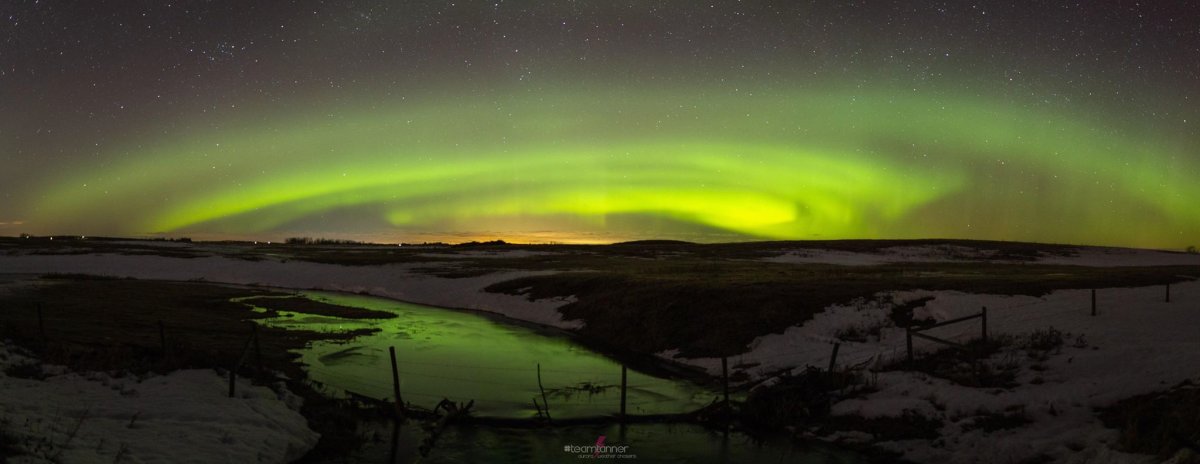It’s been several months since a good northern lights display has been visible as far south as Brooks, Alta.

A coronal hole on the sun produces solar winds, and those winds hit Earth early this week where they interacted with elements in our atmosphere creating the beautiful aurora borealis.
Moderately bright dancing lights in the night sky were reported late Wednesday into Thursday morning across much of Alberta and the Yukon.
READ MORE: How to catch the Northern Lights this week in Alberta
According to the NOAA Space Weather Prediction Centre, the chances of seeing northern and southern lights over the next two nights are minor, with the greatest chances being overnight Thursday into Friday.
This time-lapse video by Monte Heyn was captured near Sexsmith, Alta.:
If weather conditions are right, a minor geomagnetic storm will often produce dim to moderately bright northern lights.
This means, for early Friday morning, there is a more than 50 per cent likelihood of being able to see northern lights over northern sections of almost all the Canadian provinces. The chances of seeing at least faint dancing lights diminishes to less than 50 per cent in central and southern regions.

Seasoned aurora chasers warn that even with a favourable forecast, you need a fair amount of good luck to catch the phenomenon.
Upstream indications of aural activity can sometimes be a better way to gauge the likelihood of seeing the northern lights again Thursday night.
READ MORE: Here’s how you can catch the northern lights this week
Many Canadian aurora chasers look to space meteorologist Tamitha Skov for updates on the aurora forecast. Her Twitter feed will often show reports of aurora borealis (in the northern hemisphere) and aurora australis (in the southern hemisphere) in time zones several hours ahead of Western Canada.
As always, social media users interested in viewing aurora in Alberta can look to the Alberta Aurora Chasers Facebook page, which will light up with reports once northern lights are visible in their region.
Watch below: Previous Global News video of aurora borealis around the country
- Stuck in B.C. lagoon for weeks, killer whale calf is finally free
- Invasive strep: ‘Don’t wait’ to seek care, N.S. woman warns on long road to recovery
- T. Rex an intelligent tool-user and culture-builder? Not so fast, says new U of A research
- Nearly 200 fossil fuel, chemical lobbyists to join plastic treaty talks in Ottawa

















Comments